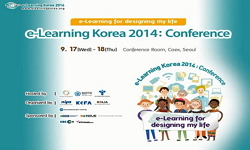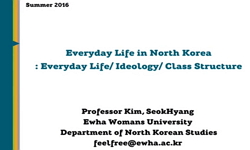Objective: A national survey was conducted to assess orthodontic residents’ current concepts and knowledge of cleft lip and palate (CLP) management in Korea. Methods: A questionnaire consisting of 7 categories and 36 question items was distributed t...
http://chineseinput.net/에서 pinyin(병음)방식으로 중국어를 변환할 수 있습니다.
변환된 중국어를 복사하여 사용하시면 됩니다.
- 中文 을 입력하시려면 zhongwen을 입력하시고 space를누르시면됩니다.
- 北京 을 입력하시려면 beijing을 입력하시고 space를 누르시면 됩니다.



Preliminary study of Korean orthodontic residents’ current concepts and knowledge of cleft lip and palate management
한글로보기https://www.riss.kr/link?id=A99680346
- 저자
- 발행기관
- 학술지명
- 권호사항
-
발행연도
2012
-
작성언어
English
- 주제어
-
등재정보
SCOPUS,SCIE,KCI등재
-
자료형태
학술저널
- 발행기관 URL
-
수록면
100-109(10쪽)
-
비고
학회 요청에 의해 무료로 제공
- 제공처
-
0
상세조회 -
0
다운로드
부가정보
다국어 초록 (Multilingual Abstract)
Objective: A national survey was conducted to assess orthodontic residents’ current concepts and knowledge of cleft lip and palate (CLP) management in Korea. Methods: A questionnaire consisting of 7 categories and 36 question items was distributed to 16 senior chief residents of orthodontic department at 11 dental university hospitals and 5 medical university hospitals in Korea. All respondents completed the questionnaires and returned them. Results: All of the respondents reported that they belonged to an interdisciplinary team. Nineteen percent indicated that they use presurgical infant orthopedic (PSIO) appliances. The percentage of respondents who reported they were ‘unsure’ about the methods about for cleft repair operation method was relatively high. Eighty-six percent reported that the orthodontic treatment was started at the deciduous or mixed dentition. Various answers were given regarding the amount of maxillary expansion for alveolar bone graft and the estimates of spontaneous or forced eruption of the upper canine. Sixty-seven percent reported use of a rapid maxillary expansion appliance as an anchorage device for maxillary protraction with a facemask. There was consensus among respondents regarding daily wearing time, duration of treatment, and amount of orthopedic force. Various estimates were given for the relapse percentage after maxillary advancement distraction osteogenesis (MADO). Most respondents did not have sufficient experience with MADO. Conclusions: These findings suggest that education about the concepts and methods of PSIO and surgical repair, consensus regarding orthodontic management protocols, and additional MADO experience are needed in order to improve the quality of CLP management in Korean orthodontic residents.
목차 (Table of Contents)
- INTRODUCTION
- MATERIALS AND METHODS
- RESULTS
- DISCUSSION
- CONCLUSION
- INTRODUCTION
- MATERIALS AND METHODS
- RESULTS
- DISCUSSION
- CONCLUSION
- REFERENCES
동일학술지(권/호) 다른 논문
-
Evaluation of mandibular cortical bone thickness for placement of temporary anchorage devices (TADs)
- 대한치과교정학회
- Jung-Hoon Kim
- 2012
- SCOPUS,SCIE,KCI등재
-
- 대한치과교정학회
- Murat Ca?laro?lu
- 2012
- SCOPUS,SCIE,KCI등재
-
Variations in surface roughness of seven orthodontic archwires
- 대한치과교정학회
- Fariborz Amini
- 2012
- SCOPUS,SCIE,KCI등재
-
Effect of fangchinoline on root resorption during rat orthodontic tooth movement
- 대한치과교정학회
- Xingfu Bao
- 2012
- SCOPUS,SCIE,KCI등재




 스콜라
스콜라






